As you can probably tell by this mid-month release (and the lack of content on my own site), I’ve been pretty busy lately and haven’t had a ton of time for FAB-related writing, so I apologize for keeping you waiting this time. Correspondingly, the world of FAB finance has been fairly uneventful during this time period, so you didn't miss much. In terms of cards that most people deal with (the $250-and-under card pool), there hasn’t been a ton of movement outside of the expected general downward trajectory of Everfest singles post-release.
This month, we’ll check up on Everfest, take a look at Legendary prices across all sets, peek at newer sealed boxes, examine the recently announced Classic Battles decks, and then wrap up with some talk of what attaining Living Legend might mean for Starvo’s value in cold foil.

Everfest
As someone who writes about finance, Everfest was kind of a messy release. We didn’t really have enough information on what was in the actual set until people started opening boxes. This prompted me to revise my evaluation of the set’s value upward- although, now that we’re a few weeks out, I think I over-corrected and probably would have been better off just leaving it alone. First edition boxes currently remain plentiful, and can be found easily at or below MAP pricing. However, even at those prices, EV is still sketchy, and it’s very easy to open a sealed box and end up with under $30 in singles. Breaking even or making a profit on an $80 box requires you to hit one of about nine cards, and even among those, only Grandeur of Valahai and CF Bravo, Star of the Show are reliably over $100. Five other cards (Stalagmite, Skullcap, and the three class Extended Art Majestics) are either oscillating around $100 or only slightly lower.
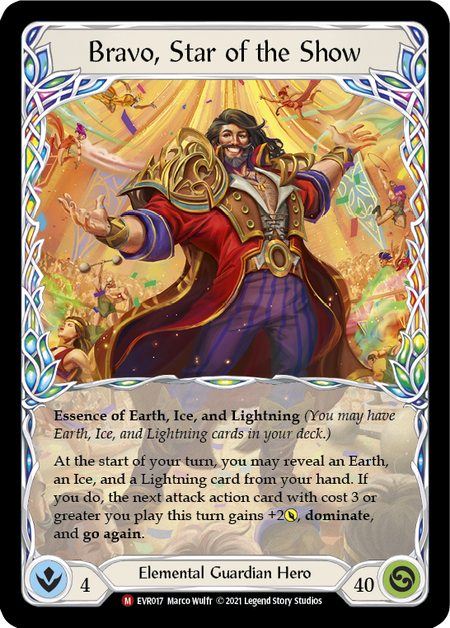
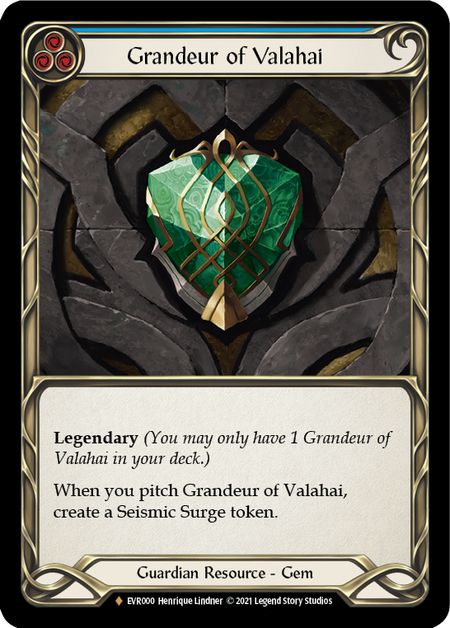
Everfest does mark a notable departure from Monarch and Tales of Aria, insofar as we do not have an announced date for an Everfest Unlimited. A lot of speculation has gone on about when and if an unlimited edition is coming, and personally, I could see it going either way. We know for a fact that Legend Story Studios initially had mock-ups of Everfest Unlimited in the Marketing Assets section on their site, but they have since removed them. In my mind, there are two probable scenarios here. First, they never actually ordered an unlimited edition printing, decided to pump the brakes, and are now waiting to order product based on market conditions (which, at this point, may mean they just never print it at all). The primary alternative I can envision is that they had already ordered the unlimited print run, but then they saw how first edition was performing and decided to hold back (in terms of announcing unlimited edition and/or in terms of its actual release date).
These have pretty different long-term outcomes for the secondary market. In the short term (the next 6-12 months), any unlimited release should be expected to further devalue most of the first edition singles. Conversely, if we never get an Everfest Unlimited, we could see a rebound in prices if LSS formally announces that they have no plans to print an Unlimited version of Everfest.
There aren’t really many lessons to be taken here. LSS seems poised to launch what’s being dubbed “FAB 2.0” prior to the next major set release. Most of the speculations and rumors tend to indicate that this will be a change to their first edition/unlimited edition sales model, which has pretty demonstrably not been working in terms of maintaining value for recent sets. Given that, I wouldn’t make any recommendations on how to approach future set releases until we know more about what they’ll actually look like.
Singles
As FAB’s cardpool grows, it becomes more difficult to cover individual cards. This month I’ll focus mostly on Legendaries, which remain a significant portion of the cost of many decks.
Also- and I expect this to be the case for the foreseeable future- I’m not going to spend time in this column discussing cold foils from the first three sets unless there is signficiant movement on them. Simply put, they’re too expensive for most players, and increasingly few of them are even available on the open market.
With that said, the unlimited versions of the WTR, ARC, and CRU Legendaries, with a couple exceptions, have been largely consistent in price since the fall.
The exceptions include:
Teklo Foundry Heart: This has been ping-ponging up and down for the past year in a way that is much more volatile than the rest of the class Legendaries from the first two sets. It is currently in a slight downward slide, clocking in at around $80. Notably, we’re probably “due” for a new adult Mechanologist this year as, along with Wizard and Ninja, it’s one of the WTR/ARC classes that haven’t received a second adult hero card yet. So we could see some fluctuation based on whether the next one wants to use Foundry Heart or if a new Mechanologist chest piece supplants it.

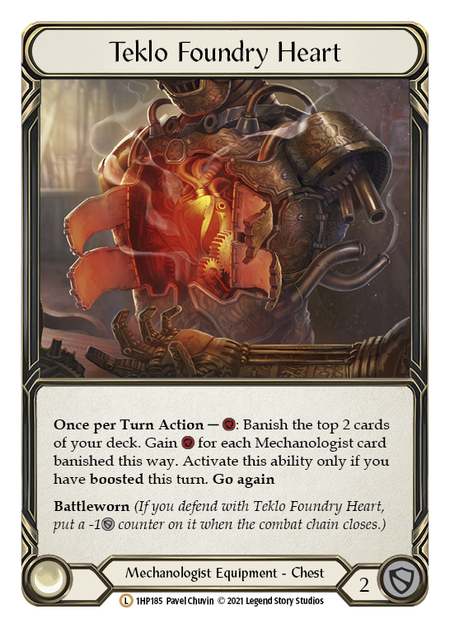
Tectonic Plating: The original Guardian chestpiece started climbing in August (in anticipation of Oldhim) while most other L’s stayed flat; then it plateaued from October until February, and is now in the midst of a pretty abrupt drop from the $120 range down to $70. Guardian has gotten a lot of options in the past 6 months, both in terms of heroes to play and gear to use, so the downward trend makes some sense.
Fyendal's Spring Tunic: Tunic was near its lowest point in the early fall (around $140-150); then it shot back up to $220 before steadily falling down to $130-140. It now appears to be ticking up again, and is currently around $160-165 and rising. As it is still an evergreen staple of the game, we should expect prices to rise across all of the “cheaper” versions of Tunic until it’s reprinted again. If you want one for the coming competitive season, prices are probably going to get worse before they get better.
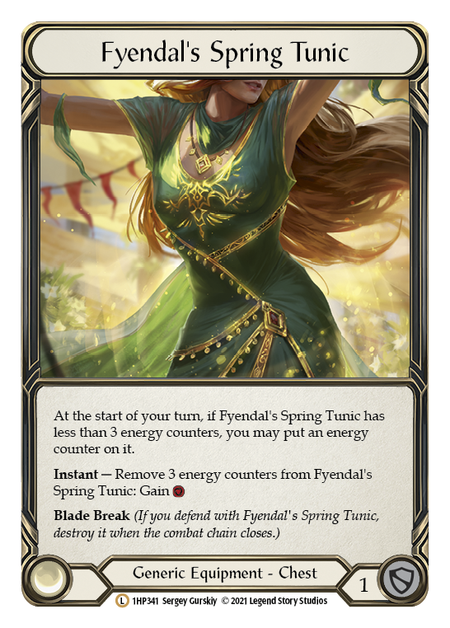
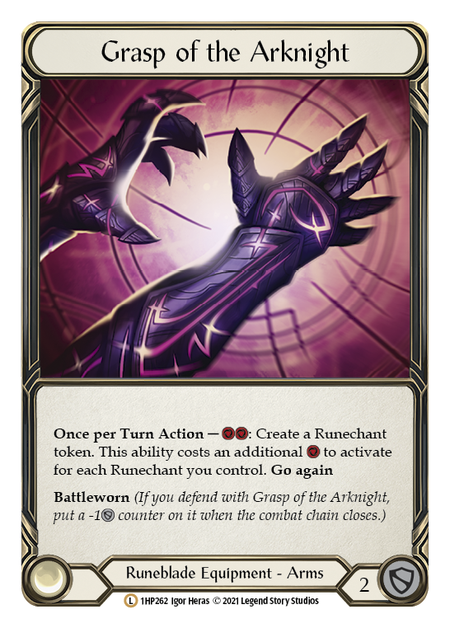
Grasp of the Arknight: I mentioned this one a few months ago as an outlier. It’s largely maintained its relatively high value, and is currently at $175-180. With Runeblade being a perennially popular class, we should expect it will continue to hold, unless the meta makes the class not viable, we get a reprint, or a new Runeblade equipment supplants it. However, I would regard it as stable as opposed to climbing at this stage, so there’s less urgency to snag a copy if you aren’t going to use it right away.
Arcanite Skullcap: Predictably, this has been falling since the Everfest reprint was announced, and all indications suggest that is has yet to reach its floor. Current prices are about $140 for the ARCu version, but with the Everfest version at $90-95, we could certainly see it drop more. The Everfest copy is trending slowly upward, but I don’t expect the ARC version to pass it on the way down. It will likely begin to pick up as the gap between the two versions tightens.
Meanwhile, Monarch and Tales of Aria have behaved similarly, with most cards maintaining fairly flat prices over the past several months both in rainbow and cold foil- again, with a couple exceptions.
Notably:
Spellbound Creepers: The RF Creepers in particular have been on the rise since the beginning of February, and are still moving upward. The CF price on these has been rising as well, but at a notably slower rate than the RF price, and they have more or less converged in the past week. As I write this, the cheapest copy on TCGPlayer is a $150 cold foil copy, with the next cheapest being a $151 rainbow foil copy. (This makes no long-term sense, and I would expect to see the CF price jump up rather than the RF price fall in the next few weeks.)
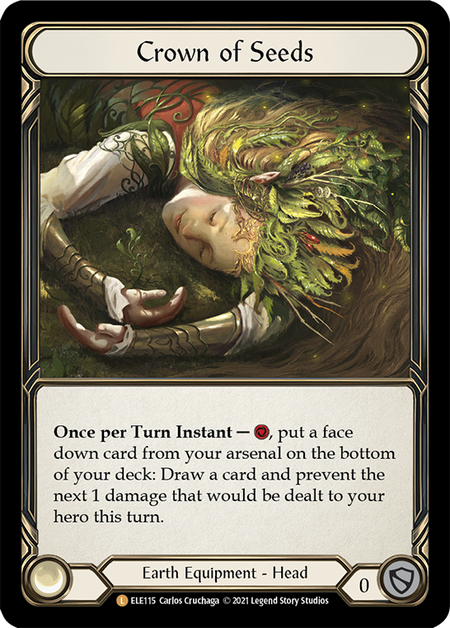
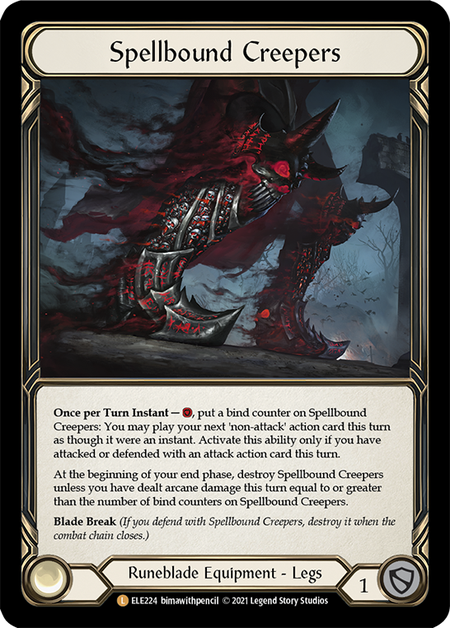
Crown of Seeds: Crown debuted, dropped hard in the first week, and then stayed flat until February, when it began to shoot up from a low of $120 RF/$150 CF to the current $185 RF/$210 CF. The trend remains upward.
New Horizon: This one has been in gradual decline since the start of 2022, with the RF version taking a little more of a beating than the CF.
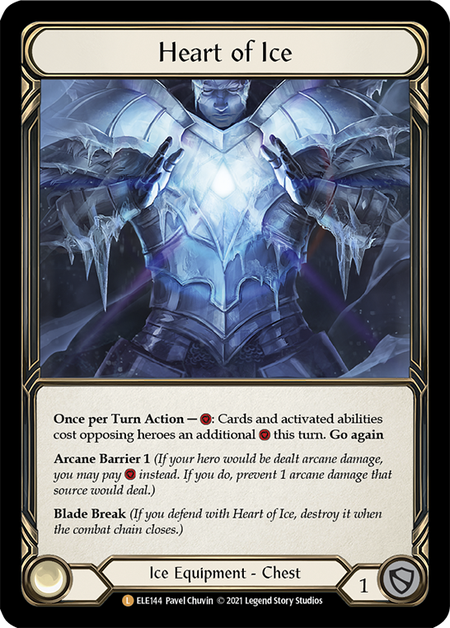
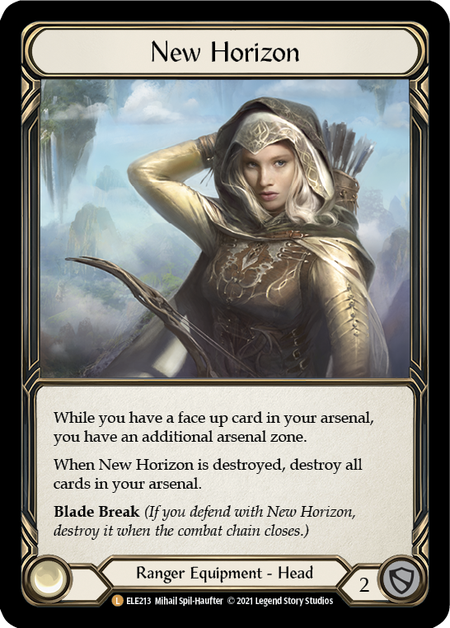
Heart of Ice: After a slow start and then a dip in January, Heart of Ice began a solid upward trend in February that appears to still be ongoing- although we are, perhaps, entering a plateau phase with $130-140 RF copies and $150-170 CFs.
Phantasmal Footsteps: This is sort of an odd one, in that its gains aren’t new. It has trended upwards since fall, and saw a bit of an additional bump in February, when it had notable CF and RF gains. Current prices sit at $340-350 for CFs and $250-275 for RFs.
Illusionist, much like Runeblade, remains a popular class; and given the number of promos and variants (so many EAs and CFs) available for Prism players, Illusionist seems to attract a disproportionate number of people interested in the fancier versions of cards. This may explain why Footsteps' CF version has performed so well in recent months compared to the other Monarch Legendary prices after the initial post-Monarch price crash.

On a more somber note, the news on Everfest Legendaries is mostly grim for people looking to sell.
Silver Palms: The obviously bad Legendary turned out to be bad. After dropping to around $50, it’s back up to about $60-65. This one seems potentially interesting if you like gambling. Right now, it’s hard to see a near term change to competitive FAB that will get this price moving. However, if a casual format (such as the oft rumored PvE) comes out, something like this could be dramatically more powerful in a co-op context. Given the relatively low current price, upward movement could be dramatic. However, if no such format emerges or it doesn’t take off with the player base, prices look a lot rougher. This is mostly a speculative buy for anyone who doesn’t need it for a casual deck or to complete a collection.
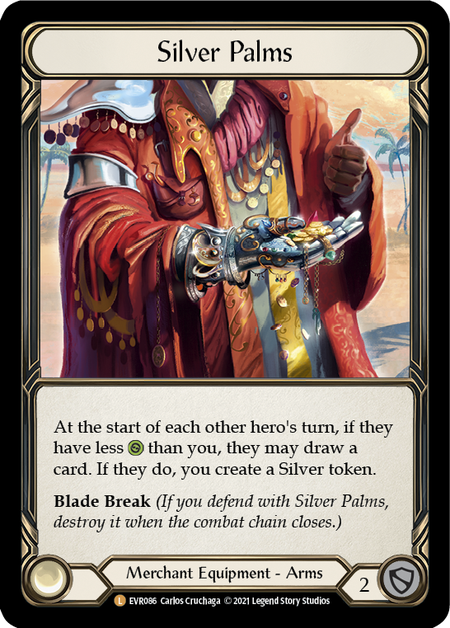
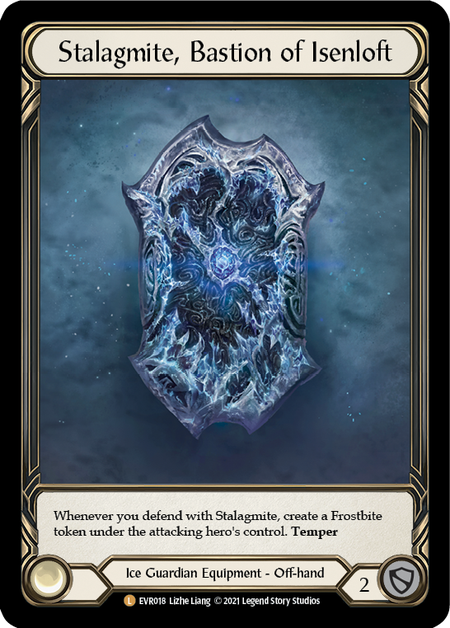
Stalagmite, Bastion of Isenloft: Stalagmite has been trending downward since release, and is currently at $100. Ignoring the overpriced sales from the first few days, the baseline price was about $120, so it’s not a massive crash; but the trend has been consistently downward and may continue a little bit more.
Arcanite Skullcap: We just talked about the ARCu version, and, as mentioned there, the Everfest version is slowly ticking up. If you don’t already own a copy for play and see yourself wanting one (which will be true of pretty much anyone with competitive ambitions), you should probably buy it sooner rather than later. We’ve seen this pattern before with Tunic: once the floor has been established for a reprint, you can expect prices to climb on the cheapest copy until it the card is reprinted again.
Sealed Boxes
There’s not a lot to talk about in terms of the accessibly-priced first edition boxes (MON/TOA/EVR). They’re all fairly flat for all of 2022, and I don’t think we’ll see changes here until we see product dry up from retailers and/or LSS puts out print run numbers that deviate significantly from community projections (which can range significantly, depending on who you’re listening to). Right now, sealed box FAB investing remains a long-term game. As ever, we’re talking on the order of years, not months.
I would avoid buying any sealed boxes or cases with the idea that you’ll be able to sell them for a solid profit within the year or even two years. Again, all of this could change when we see what FAB 2.0 holds for the way new sets are released, but until then, there’s no need to rush to accumulate recent sealed boxes.
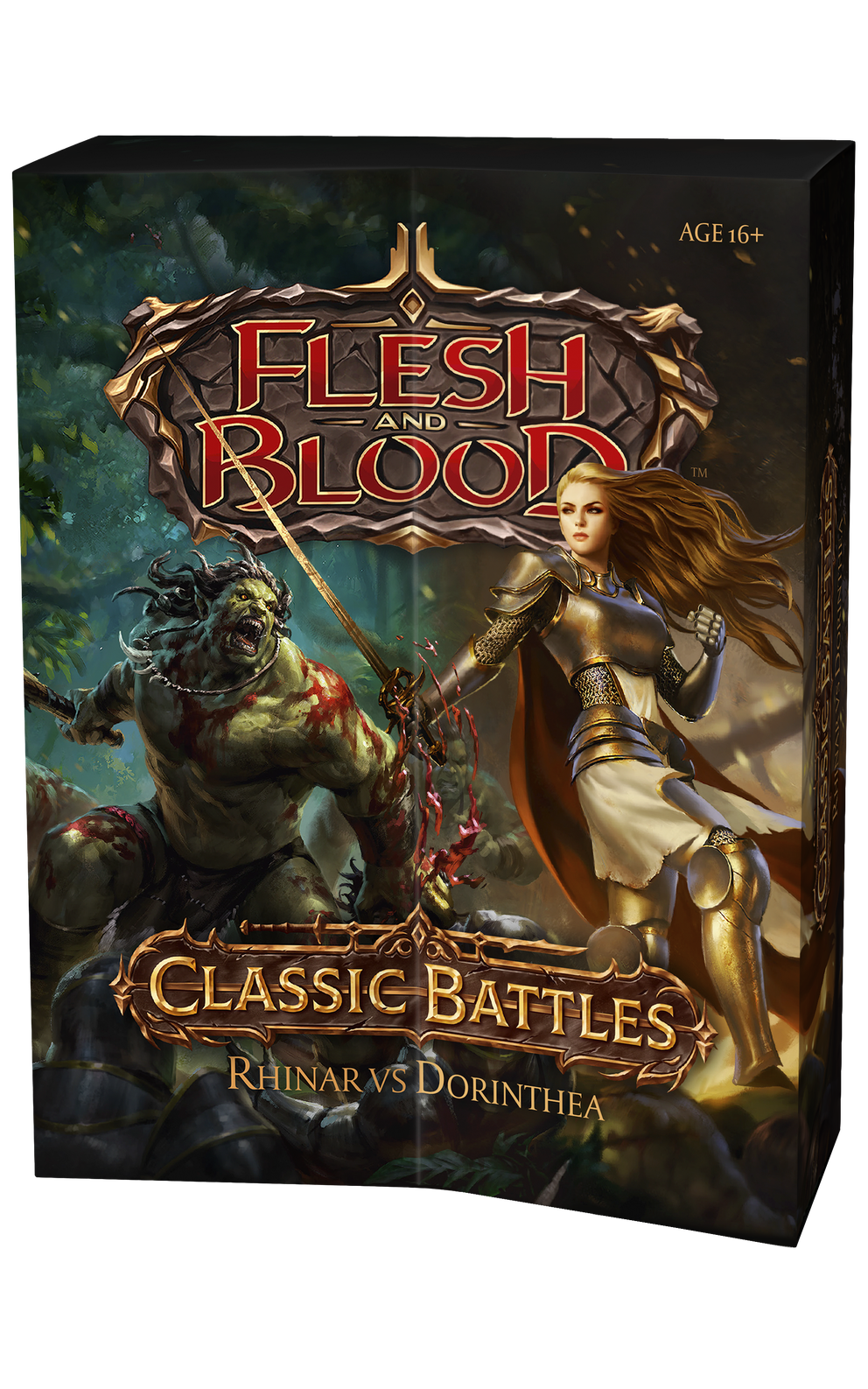
Classic Battles
This is the most interesting product announcement in a while. You can get more info- including the fact sheet- from LSS, but the short version is that this product is a bundled set of two Blitz decks with brand new Young versions of Dorinthea and Rhinar in cold foil, along with full art mentors, RF equipment, and some non-gameplay extras (like a mini lore book) for $50.
It’s very hard to gauge the value of these until we know the exact contents. For instance, if the set included a single copy of Command and Conquer, it would sell absurdly well based solely on that. Whereas, if the only valuable cards are the CF heroes themselves, and potentially the mentors, then the product’s long-term value is probably flat until it is well out of print.
There is a decent, albeit imperfect, comparison for these as long term investments. Magic previously released a very similar product (they even used the same style of box with an angled convex front). These Duel Decks were released from 2007-2018, encompassing twenty-one product releases. They debuted at $20, and each deck contained a sort of marquee card with new art (so, somewhat comparable to the CF heroes). Currently these sell as sealed products on the secondary market ranging from about $23-110, with a couple outliers at the upper that are harder to track down (2009’s Divine vs. Demonic has a single copy listed on TCGPlayer at $175, for instance).
Given that, I could see Classic Battles being a potentially solid long term pick up, particularly if the CF heroes aren’t released in other products or promotions. Imagine a future where, five years after these are OOP, Dorinthea, Quicksilver Prodigy is still a modestly popular casual hero and the only cold foil version with that particular art is the Classic Battles version. In a scenario like that, you could probably see these going for well over MSRP.
Still, I’d be a little cautious of them out of the gate (outside of buying a copy for your own use to have the new heroes) because we have no idea what LSS’ plans are in terms of how long they plan to keep them in print. The product sheet does list them as being targeted at “new players,” which, if we use Blitz decks as a comparison, may mean we can plan to see a lot of these in circulation. So keep an eye on them, but you probably don’t need to rush out and buy a case of twelve.
Living Legend
In the short handful of weeks that Bravo, Star of the Show has been out there in the world, he’s already accumulated 552 Living Legend points, putting him in first place on the lifetime rankings. Whether it happens soon or not, it seems plausible that he’ll be the first adult hero that we ever see rotated from competitive play. The big question is, “What happens to the price of the CF variant if and when this occurs?”
The short answer is, “We don’t know.” After all, this has never happened before. However, we have seen some individual card bans- though nothing really comparable to a card as valuable as Starvo. When Drone of Brutality was banned, its price shot up astronomically (which was the market acting irrationally) before dropping precipitously over the following months. Meanwhile, Duskblade’s preemptive Classic Constructed ban kneecapped its debut price, and the subsequent Blitz ban pushed it down still further, so we don’t have a lot of strong precedents in FAB to base a projection off of.
I’m personally inclined to believe that we’ll see a signficiant price drop following a Living Legend ban. Where this gets interesting: it's entirely possible that Starvo could shoot back up if a new popular format emerged where he was legal. In terms of new formats, we’d most likely be looking for a popular casual format, or LSS could move the game into having multiple Classic Constructed formats. Still, I would be cautious about buying CF Starvo in the face of his rapidly climbing Living Legend score. The market seems to share some on this hesitancy, as Starvo held firm throughout February, finishing the month between $200-220, but he’s down to $160-180 in the past week.
Waiting Patiently
As far as I can tell, we’re in a quiet period- though with FAB 2.0 on the horizon, this could be the calm before the storm. Still, it’s hard to make any real projections because we’re presumably about to see the entire release model shuffled up.
I don’t find opening cases with multiple boxes containing only $20-30 in singles to really be an acceptable place for the game to be. So, by that metric, Everfest is kind of a failure specifically at delivering a product with a reasonable EV. However, LSS also used the set to try a bunch of new things, and several of those were positive moves: the CF variant heroes with full art backs are a really good thing, and LSS should be doing it for literally every new hero in a set. Modest hits like the extended art rares are a welcome addition and could, with some iteration, help even out the value of opening at the box level. And, while the move to three Ls in a supplemental product is still insufficient in my book, it’s a step in the right direction.
LSS’ active commitment to iterating until they get it right is probably one of the biggest positives for the long term financial prospects of the game. The other is the robust organized play program, which is set up to have a potentially huge year in 2022 as COVID restrictions are relaxed and we see more major events hosted across the world than ever before. Outside of the FAB 2.0 news, big attendance numbers at Pro Tour New Jersey are the other major thing to stay on the lookout for in the next few months.
Finally, due to the mid-month release of this article and the relative inaction in the market, you can expect the next State of the Market at the end of April. See you then!




